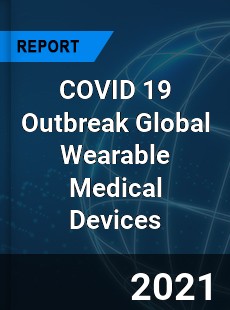Exclusive deal : 20% Instant discount on Direct purchases! Don't wait—claim your discount today!
The Study also encompasses COVID-19 Outbreak & Impact Analysis, how
Market Data Breakdown and Growth Pattern by Type
Market Data Breakdown and Growth Pattern by End-Use Industry / Applications
[chart:applicationNames:pie]
Competitive Landscape
In the competitive analysis section of the
Players Profiled in the
[chart:playerNames:cylinder]
Regional Landscape & Analysis
North America Country (United States, Canada)
South America (Brazil, Argentina, Chile, Rest of South America)
Asia-Pacific (China, Japan, India, South Korea, Australia, Singapore, Malaysia, Indonesia, Thailand, Philippines, Others)
Europe (Germany, United Kingdom, France, Italy, Spain, Switzerland, Netherlands, Sweden, Baltic, rest of Europe)
Rest of World [The United Arab Emirates, Saudi Arabia (KSA), South Africa, Turkey, Israel, Others]
Overall, the
- 1.1 Research Objective
- 1.2 Scope of the Study
- 1.3 Definition
- 1.4 Assumptions & Limitations
Chapter 2: Executive Summary
- 2.1 Market Snapshot
Chapter 3: Market Dynamics Analysis and Trends
- 3.1 Market Dynamics
- 3.1.1 Market Growth Drivers
- 3.1.2 Market Restraints
- 3.1.3 Available Market Opportunities
- 3.1.4 Influencing Trends
Chapter 4: Market Factor Analysis
- 4.1 Porter’s Five Forces Analysis
- 4.2 Bargaining power of suppliers
- 4.3 Bargaining power of buyers
- 4.4 Threat of substitute
- 4.5 Threat of new entrants
- 4.6 Porter's Five Forces Analysis
- 4.7 Value Chain Analysis
- 4.8 Market Impact Analysis
- 4.9 Regional Impact
- 4.10 Pricing Analysis
- 4.11 Import-Export Analysis
Chapter 5: Competitive Landscape
- 5.1 Company Market Share/Positioning Analysis
- 5.2 Key Strategies Adopted by Players
- 5.3 Vendor Landscape
- 5.3.1 List of Suppliers
- 5.3.2 List of Buyers
Chapter 6: Wearable Medical Devices Market Company Profiles
- 6.1 Competitive Landscape
- 6.1.1 Competitive Benchmarking
- 6.1.2 Wearable Medical Devices Market Share by Manufacturer (2023)
- 6.1.3 Industry BCG Matrix
- 6.1.4 Heat Map Analysis
- 6.1.5 Mergers and Acquisitions
- 6.2 Monica Healthcare, Koninklijke Philips N.V., Fitbit Inc., VitalConnect, Nokia Technologies, World Global Network, Garmin Ltd., Xiaomi, LifeWatch AG., Omron Healthcare, Activeinsights Ltd., Jawbone Inc., Polar Electro Oy, Misfit, Drägerwerk AG & Co. KGaA
- 6.2.1 Company Overview
- 6.2.2 Product/ Services Offerings
- 6.2.3 SWOT Analysis
- 6.2.4 Financial Performance
- 6.2.5 KEY Strategies
- 6.2.6 Key Strategic Moves and Recent Initiatives
Chapter 7: Wearable Medical Devices Market, By Type
- 7.1 Overview
- 7.1.1 Market size and forecast
- 7.2 Diagnostic (Heart, Pulse, BP, Sleep), Therapeutic (Pain, Insulin, Rehabilitation)
- 7.2.1 Key market trends, factors driving growth, and opportunities
- 7.2.2 Market Size Estimates and Forecasts to 2032, by region
- 7.2.3 Market analysis by country
Chapter 8: Wearable Medical Devices Market, By Application
- 8.1 Overview
- 8.1.1 Market size and forecast
- 8.2 Sports & Fitness, Remote Patient Monitoring, Home Healthcare, Ear Wear
- 8.2.1 Key market trends, factors driving growth, and opportunities
- 8.2.2 Market Size Estimates and Forecasts to 2032, by region
- 8.2.3 Market analysis by country
Chapter 9: Wearable Medical Devices Market By Region
- 9.1 Overview
Chapter 10: Analyst Viewpoint and Conclusion
- 10.1 Recommendations and Concluding Analysis
- 10.2 Potential Market Strategies
Chapter 11: RESEARCH METHODOLOGY
- 11.1 Overview
- 11.2 Data Mining
- 11.3 Secondary Research
- 11.4 Primary Research
- 11.4.1 Primary Interviews and Information Gathering Process
- 11.4.2 Breakdown of Primary Respondents
- 11.5 Forecasting Model
- 11.6 Market Size Estimation
- 11.6.1 Bottom-Up Approach
- 11.6.2 Top-Down Approach
- 11.7 Data Triangulation
- 11.8 Validation
Research Methodology:
Wearable Medical Devices Market Size Estimation
To estimate market size and trends, we use a combination of top-down and bottom-up methods. This allows us to evaluate the market from various perspectives—by company, region, product type, and end users.
Our estimates are based on actual sales data, excluding any discounts. Segment breakdowns and market shares are calculated using weighted averages based on usage rates and average prices. Regional insights are determined by how widely a product or service is adopted in each area.
Key companies are identified through secondary sources like industry reports and company filings. We then verify revenue estimates and other key data points through primary research, including interviews with industry experts, company executives, and decision-makers.
We take into account all relevant factors that could influence the market and validate our findings with real-world input. Our final insights combine both qualitative and quantitative data to provide a well-rounded view. Please note, these estimates do not account for unexpected changes such as inflation, economic downturns, or policy shifts.
Data Source
Secondary Sources
This study draws on a wide range of secondary sources, including press releases, annual reports, non-profit organizations, industry associations, government agencies, and customs data. We also referred to reputable databases and directories such as Bloomberg, Wind Info, Hoovers, Factiva, Trading Economics, Statista, and others. Additional references include investor presentations, company filings (e.g., SEC), economic data, and documents from regulatory and industry bodies.
These sources were used to gather technical and market-focused insights, identify key players, analyze market segmentation and classification, and track major trends and developments across industries.
| Market Size |
|
|
| Market Position of Top Company |
|
|
| Qualitative Analysis |
|
|
Primary Sources
As part of our primary research, we interviewed a variety of stakeholders from both the supply and demand sides to gather valuable qualitative and quantitative insights.
On the supply side, we spoke with product manufacturers, competitors, industry experts, research institutions, distributors, traders, and raw material suppliers. On the demand side, we engaged with business leaders, marketing and sales heads, technology and innovation directors, supply chain executives, and end users across key organizations.
These conversations helped us better understand market segmentation, pricing, applications, leading players, supply chains, demand trends, industry outlook, and key market dynamics—including risks, opportunities, barriers, and strategic developments.
Key Data Information from Primary Sources
| Primary Sources | Parameters | Key Data |
| Market Segments(by Application, by Type) |
|
|
| Total Market |
|
|

